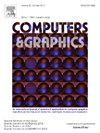A multi-view projection-based object-aware graph network for dense captioning of point clouds
IF 2.5
4区 计算机科学
Q2 COMPUTER SCIENCE, SOFTWARE ENGINEERING
引用次数: 0
Abstract
3D dense captioning has received increasing attention in the multimodal field of 3D vision and language. This task aims to generate a specific descriptive sentence for each object in the 3D scene, which helps build a semantic understanding of the scene. However, due to inevitable holes in point clouds, there are often incorrect objects in the generated descriptions. Moreover, most existing models use KNN to construct relation graphs, which are not robust and have poor adaptability to different scenes. They cannot represent the relationship between the surrounding objects well. To address these challenges, in this paper, we propose a novel multi-level mixed encoding model for accurate 3D dense captioning of objects in point clouds. To handle holes in point clouds, we extract multi-view projection image features of objects based on our key observation that a hole in an object seldom exists in all projection images from different view angles. Then, the image features are fused with object detection features as the input of subsequent modules. Moreover, we combine KNN and DBSCAN clustering algorithms to construct a graph G and fuse their output features subsequently, which ensures the robustness of the graph structure for accurately describing the relationships between objects. Specifically, DBSCAN clusters are formed based on density, which alleviates the problem of using a fixed K value in KNN. Extensive experiments conducted on ScanRefer and Nr3D datasets demonstrate the effectiveness of our proposed model.

求助全文
约1分钟内获得全文
求助全文
来源期刊

Computers & Graphics-Uk
工程技术-计算机:软件工程
CiteScore
5.30
自引率
12.00%
发文量
173
审稿时长
38 days
期刊介绍:
Computers & Graphics is dedicated to disseminate information on research and applications of computer graphics (CG) techniques. The journal encourages articles on:
1. Research and applications of interactive computer graphics. We are particularly interested in novel interaction techniques and applications of CG to problem domains.
2. State-of-the-art papers on late-breaking, cutting-edge research on CG.
3. Information on innovative uses of graphics principles and technologies.
4. Tutorial papers on both teaching CG principles and innovative uses of CG in education.
 求助内容:
求助内容: 应助结果提醒方式:
应助结果提醒方式:


